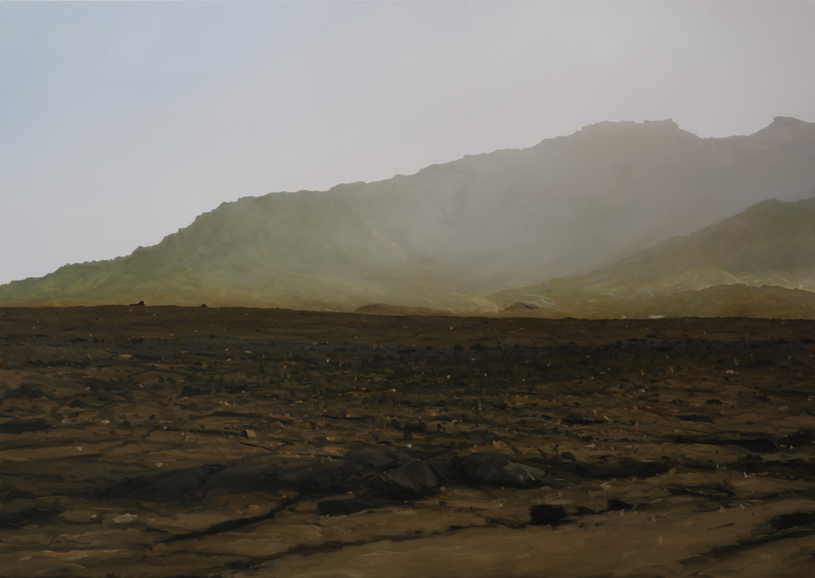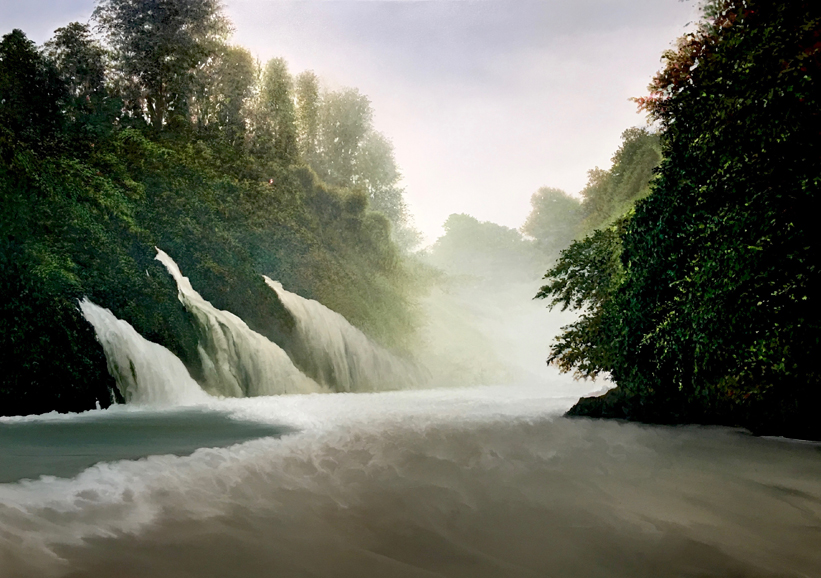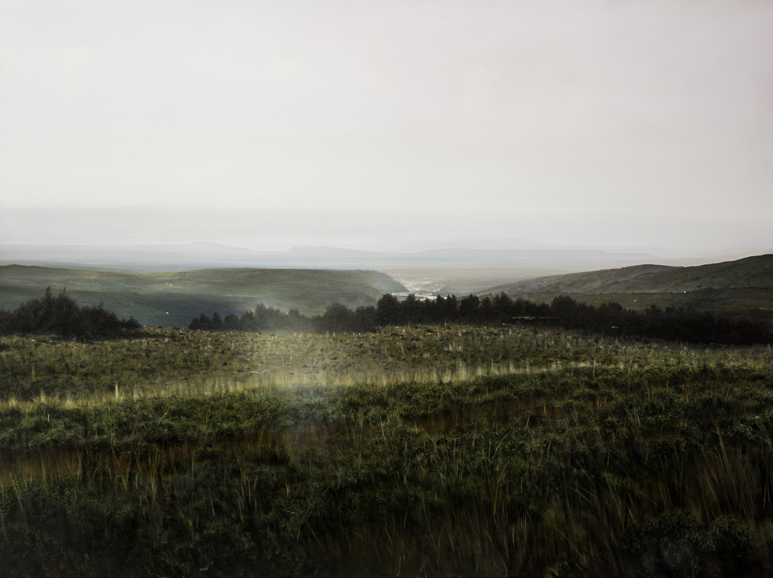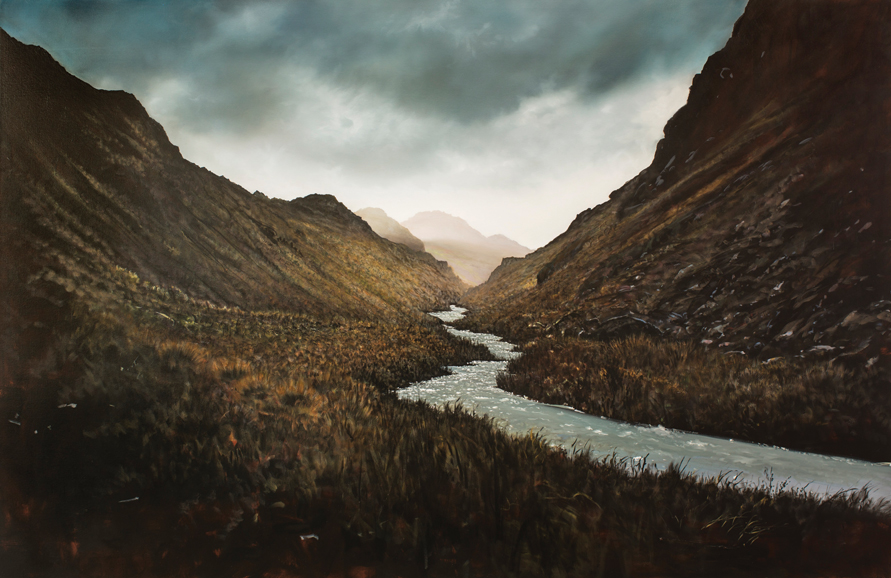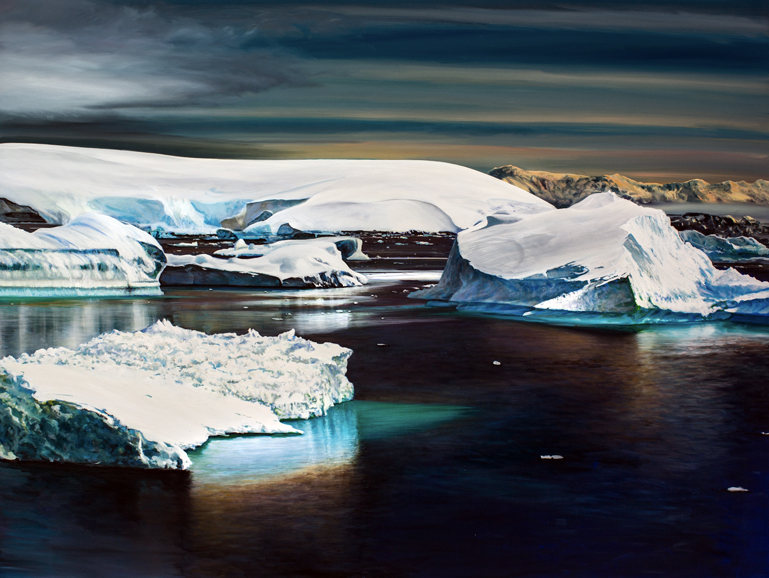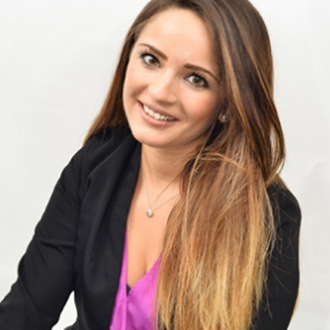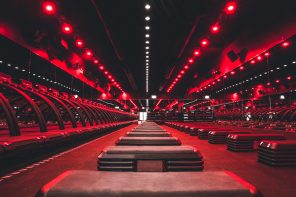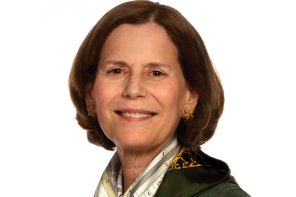At first glance, it’s hard to distinguish the work of Tula Telfair from photography.
These remote wilderness scenes, however, aren’t recreated from photographs or even memories but from the depths of the artist’s imagination. Having a childhood that spanned four continents, she has been inspired by her global travels as well as her thoughts and emotions.
“Making art is a form of self-portraiture,” says Telfair, a professor of art at Wesleyan University in Middletown, Connecticut. “The work I create is informed by my extensive bank of experiences as well as my responses to the world in the moment that I’m creating a piece.”
WAG recently met with the Bronxville-born, Lyme, Connecticut, resident at the Heather Gaudio Fine Art in New Canaan for her latest solo exhibition, “Tula Telfair: Invented Landscapes,” running through March 25. On display is a stunning collection of oil paintings created from myriad techniques, palettes, lighting and imagined terrains to express distinct moods. Only close up can viewers distinguish between Telfair’s realistic landscapes and nature photography.
“While I’m painting, I think about changing weather systems, shifting light and color, and the amount of humidity in the air — because, if I can clearly portray these, the work will evoke an emotional response from viewers,” she says. “I’m interested in triggering recognition and longing with this work. I hope to inspire viewers to contemplate their past and future, recall meaningful moments they experienced in nature, and satisfy their desire to witness something that is both familiar and new in order to have an experience that makes them aware of being alive.”
Telfair, who works on all of her paintings simultaneously —12 to 18 works at once — uses some of the most precise detail to convey humidity, aridity and lack thereof.
“When I was a child, I had to walk onto the tarmac to get into an airplane,” Telfair recalls. “One hour I’d be in the sweltering heat of Africa — the doors would shut, and when they opened, I might feel dry bitter cold air in Switzerland … I now appreciate how deeply affected I was by the physical differences between places.”
None of her landscapes feature humans or animals, which is done purposely.
“I believe these paintings are evocative of what it means to be aware of a physical space that’s much larger and more permanent than we are,” Telfair says. “I don’t include human figures in my paintings so viewers can imagine encountering these epic spaces alone.”
The final product does not necessarily reflect the early stages of her work, or, sometimes, the original idea in its entirety. She explains how one painting can morph from a single idea into an entirely new concept, depending on how she feels about it.
“Each painting is a collection of different painterly techniques that create the final image,” she says. “Sometimes a painting of a desert will become an arctic landscape, simply because I didn’t like the composition and wanted to change the intensity and interplay between the sky and the earth.”
She refers to one painting in particular, a breathtaking composite of hazy mountaintops in the background with speckles of pinks, reds and blues in the foreground. The brushstrokes represent the area of the painting that remains unfinished. Occasionally, the speckled pentimenti peek through some of her finished canvases.
The creative process didn’t always come naturally to the artist. Telfair, who divides her time between Connecticut and New York City, moved from Bronxville to Central West Africa at just two weeks old. She recalls her upbringing in the cities of Libreville and Makokou and the town of Belinga in Gabon and frequent trips to faraway places — approximately every two weeks — like Paris, London or Hong Kong before returning to the United States at age 8.
But despite her exposure to foreign lands, she never actually anticipated being an artist, and it wasn’t until age 19 that she began painting. After struggling in art appreciation class at age 16, Telfair was prompted to improve her drawing skills and so she did. She then went on to pursue a fine arts degree at the Moore College of Art & Design in Philadelphia, where she was encouraged to try painting, and later pursued a master’s degree at Syracuse University. This led to experimenting with a variety of styles, from industrial still life to photorealism and to her current pursuit of landscapes.
And though none of her landscapes exist in reality, perhaps they’re a compilation of all the places she’s ever seen — and will see.
“I’m always ready to make art,” she says.
For more, visit heathergaudioartgallery.com and tulatelfair.com.

